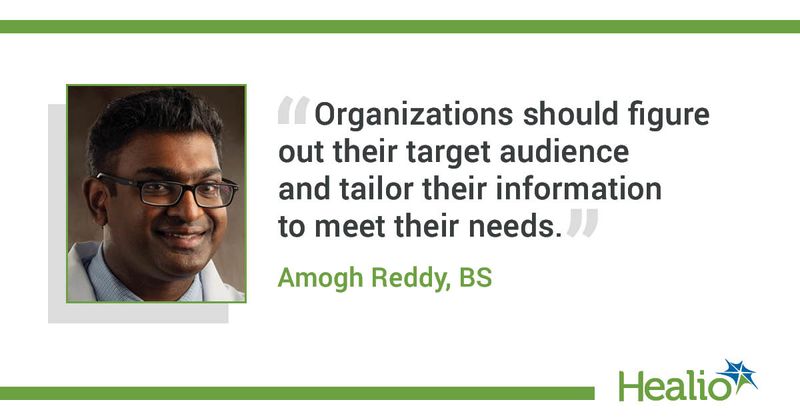Q&A: Providers encouraged to discuss quality of online asthma information with patients
Key takeaways:
- The top 15 websites for asthma all were written at an eighth-grade level or higher.
- Only one website was considered excellent on the DISCERN scale.
- Providers should discuss online information with their patients.
Patients often go online when they experience symptoms they do not understand. But when these symptoms involve asthma, even websites from professional and governmental organizations may fall short in providing what patients need.
For example, quality scores based on a JAMA benchmark tool ranged from 0 to 3 on a 4-point scale for the 15 most popular websites found in a Google search of “asthma” in a recent analysis.

Only one site, MedPlus.gov, was deemed excellent in terms of reliability and quality based on the DISCERN instrument, whereas five were considered good, six were called fair, and three were assessed as poor.
Also, despite AMA guidelines recommending readability at no higher than a sixth-grade level for patient educational material, the readability of these sites ranged from an eighth-grade level to freshman year of college.
Healio spoke with Amogh Reddy, BS, a student at the Alabama College of Osteopathic Medicine, to find out more about the impact of online information on how patients address their health.
Healio: What prompted this study?
Reddy: For many, the internet is a first-line source for all personal health care-related questions. In order to have an impact on the most significant number of users seeking medical knowledge, health information needs to be written in a way that is easily understood. This prompted us to evaluate the readability and quality of online asthma material.
Healio: Were there any particularly surprising or significant findings you would like to spotlight?
Reddy: We were surprised to see that all 15 websites we evaluated containing asthma patient education material had a mean grade readability level beyond the AMA recommended reading level of sixth grade or below. This is significant, as more and more patients are relying on online educational material as guidance for managing their condition, which makes it imperative that online material be written at the appropriate grade level.
Healio: Many patients get information from social media. Does social media have any benefits for patients looking to learn more about asthma?
Reddy: Yes, patients can utilize social media to their advantage to learn more about asthma. Trustable organizations such as the Asthma and Allergy Foundation of America are active on popular social media platforms (ie, Instagram ) to spread awareness of asthma, suggest potential asthma triggers, and what precautions (ie, maintaining a healthy home) to take to reduce asthma flareups. Patients can also find multiple asthma support groups on platforms such as Facebook and connect with people who are experiencing similar symptoms and share helpful strategies on how they are managing their condition.
Healio: Does social media present any risks for patients looking to learn more about asthma?
Reddy: Yes, social media can also pose a risk to patients trying to learn more about asthma. The first is self-diagnosis. If patients feel they may have asthma after researching information through social media, they must visit their health care provider for further assessment. Asthma can display itself through various signs and symptoms, so it is vital that patients visit their health care provider for a proper evaluation to rule out other conditions and confirm an asthma diagnosis. Secondly, information regarding asthma on social media may be outdated or inaccurate, so it is crucial that patients share the information they are viewing on social media with their health care provider to get their approval that the information is indeed accurate and appropriate to follow.
Healio: Do you have any recommendations for how the organizations behind the websites you studied should take advantage of social media to improve patient education?
Reddy: Social media is a powerful tool, and asthma organizations can utilize it to improve asthma education and management. Organizations should first adopt a social media strategy. Organizations should figure out their target audience and tailor their information to meet their needs. This includes presenting information in a patient-friendly way (ie, using simple words, avoiding medical jargon, using lots of pictures, and using relatable analogies) to their audience. Organizations can also create polls to share with their audience to see which types of information are helpful. Organizations can hold Q&A sessions with their audience to see where they can improve upon asthma education as well.
Healio: Do you have any recommendations for how asthma specialists can best steer patients toward appropriate online information?
Reddy: If patients are interested in learning more about asthma online, asthma specialists should sit down with them and discuss which governmental websites, medical journals, professional asthma organization websites, and social media pages to follow and learn more about their condition and ways to manage it. However, every patient is unique, and allergists must urge their patients to consult with them before making any changes to their treatment regimen based on the information they viewed online.
Healio: What are the takeaways from this study for doctors who treat asthma?
Reddy: The most important takeaway for doctors who care for patients with asthma is to discuss the options that patients can utilize if they seek online resources to help in the management of their asthma in addition to their physician’s care.
Healio: What is the next step in this research?
Reddy: We were able to establish that the readability of online asthma patient education material is presented at a much higher level than AMA’s recommended guidelines. A good next step would be to research further into how we can make this information more readable for patient use.
Reference:
For more information:
Amogh Reddy, BS, can be reached at amogh126@gmail.com.
